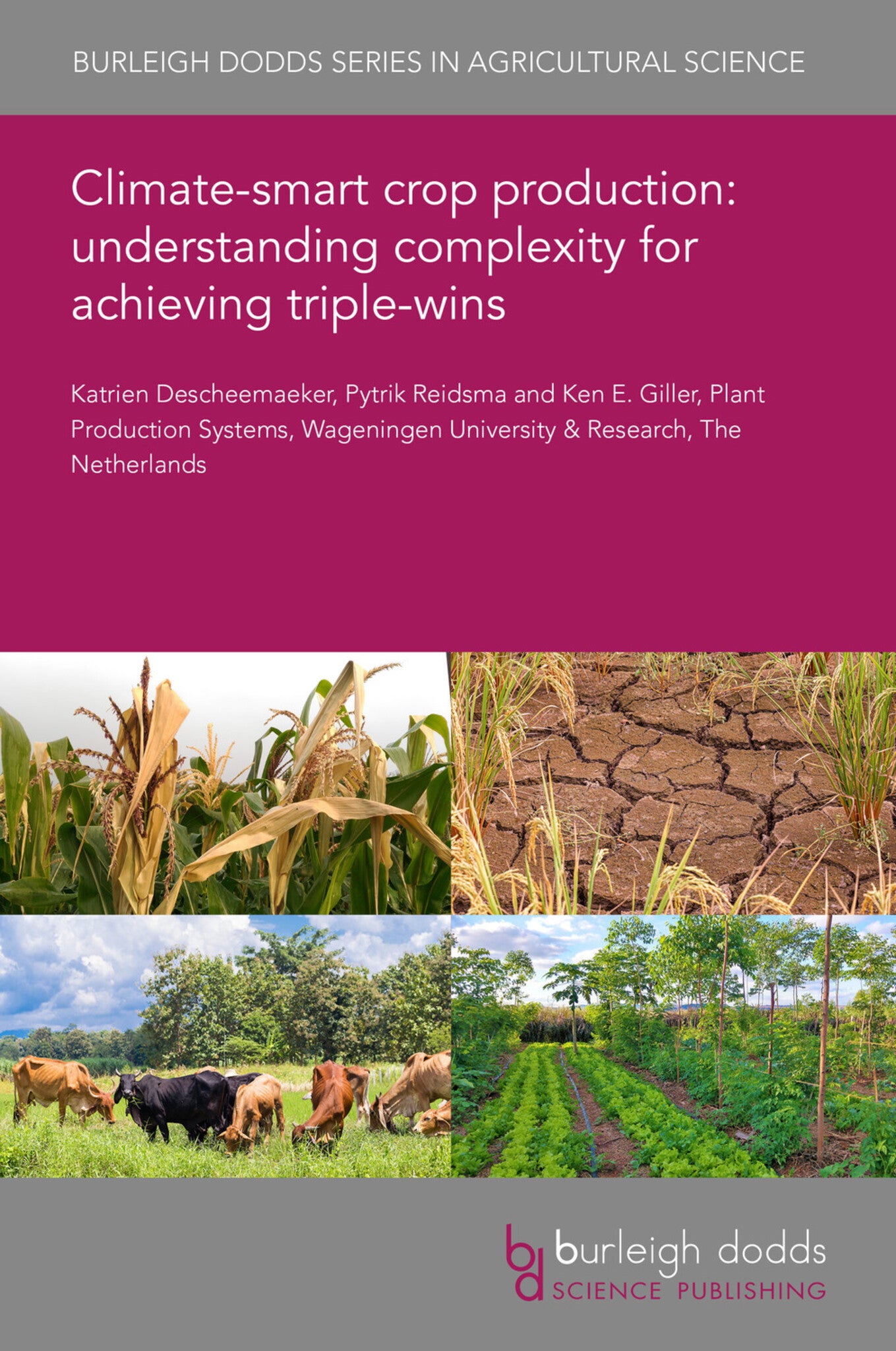We're sorry. An error has occurred
Please cancel or retry.
Climate-smart crop production: understanding complexity for achieving triple-wins
Regular price
£25.00
Sale price
£25.00
Regular price
£25.00
Unit price
/
per
Sale
Sold out
Re-stocking soon
Climate-smart cropping options aim to simultaneously improve crop productivity, adapt to climate change and reduce greenhouse gas emissions. This chapter provides a concise overview of a wide range...
Read More

Some error occured while loading the Quick View. Please close the Quick View and try reloading the page.
Couldn't load pickup availability
- Format:
-
27 April 2020

Climate-smart cropping options aim to simultaneously improve crop productivity, adapt to climate change and reduce greenhouse gas emissions. This chapter provides a concise overview of a wide range of climate-smart cropping options and investigates in detail the potential of conservation agriculture and soil fertility management to contribute to the three pillars of climate-smart agriculture (CSA), with attention for possible trade-offs and constraints to adoption. We warn that gaps in the understanding and assessment pitfalls may lead to an overestimation of the CSA potential. Two contrasting case studies from intensive and low-input agriculture illustrate that contextualized and quantitative information can be obtained with participatory, integrated and cross-scale assessments. Such information is key to support decision and policy making towards holistic solutions that can enable a transformation to climate-smart agriculture.

Price: £25.00
Publisher: Burleigh Dodds Science Publishing
Imprint: Burleigh Dodds Science Publishing
Series: Burleigh Dodds Series in Agricultural Science
Publication Date:
27 April 2020
ISBN: 9781786767431
Format: eBook
BISACs:
SCIENCE / Global Warming & Climate Change, Climate change, TECHNOLOGY & ENGINEERING / Agriculture / Agronomy / Crop Science, TECHNOLOGY & ENGINEERING / Agriculture / Sustainable Agriculture, Sustainable agriculture, Agronomy and crop production

1 Introduction 2 Climate-smart agriculture (CSA) cropping options 3 Gaps and problems in our current understanding of the climate-smart agriculture (CSA) concept and its potential 4 Operationalizing climate-smart agriculture (CSA) 5 Conclusion 6 Acknowledgements 7 References



